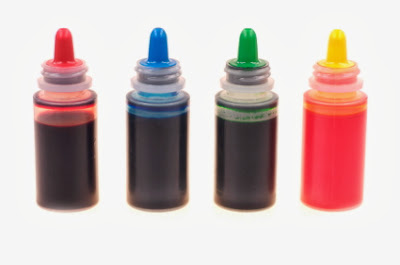The word “artificial” has several dictionary definitions. 1. Produced by humans. 2. Lacking naturalness. 3. Made without regard to the particular needs of a situation or person. All three definitions are fitting for artificial food (and drink) additives.
Modern food processing has brought us to the point where we can barely pronounce many of the ingredients listed on food labels. Thankfully, there is a growing body of evidence about these ingredients. Because many of them are relatively new, we do not have a lot of long-term data to assure us of their safety. It is important to be informed and updated on current research and knowledge about these artificial ingredients.
This blog series on Artificial Additives will help you explore the known (and unknown) about different types of artificial additives so that you can protect your health and the health of your family as an educated consumer.
The Cocktail Effect
Before beginning the series, it’s important to consider what is widely known as the cocktail effect. Although some agencies and researchers that test and study these additives may say they are generally safe, they are referring to one additive that is singled out. It is important to critically consider the collective effect of multiple exposures to multiple additives. How do these additives interact with one another? There is a lot that is unknown.
Food Colorings
There is color in nature. Then there is color in the laboratory. It’s festive. It’s fun. But it’s fake. Artificial food colorings are chemicals and dyes used to color foods. Companies use them to enhance or change the appearance of processed foods (such as candy, cereals, pet foods), beverages (such as sodas, fruit juice), and condiments (salad dressings). Many colorings and dyes have been banned in European countries and a few in our country. We just have to wait and see what will be banned next. In the meantime, it is important to stay informed.
What are food colorings? According to the FDA, the colorings they approve and certify are “synthetically produced (or human made) and used widely because they impart an intense, uniform color, are less expensive, and blend more easily to create a variety of hues. There are nine certified color additives approved for use in the United States .”
Another category made by the FDA are food colorings that are “exempt from certification” because they are “derived from natural sources such as vegetables, minerals or animals.” These include annatto extract (yellow), dehydrated beets (bluish-red to brown), caramel (yellow to tan), beta-carotene (yellow to orange) and grape skin extract (red, green).
Although the second category may sound natural and safe, consider caramel coloring. We are all used to the caramelization we see in our kitchen when sugars brown, such as heating onions on the pan. The difference between our kitchens and other companies is that they may commonly use ammonia in the process. This process forms two dangerous by-products, 2-methylimidazole and 4-methylimidazole, both of which have been linked to cancer.
Numerous studies , such as the meta-analysis published in Developmental and Behavioral Pediatrics, shows that food colorings can lead to allergic reactions and hyperactivity in children. A popular study recently published in The Lancet shows a strong link between food additives and hyperactivity in children.
Artificial food dyes are made from petroleum. Does that sound appetizing? Is it worth the enhanced appearance? The Center for Science in the Public Interest has developed a helpful resource of studies that demonstrate the dangers of dyes. Here is a list of different artificial dyes you may stumble upon:
- Blue 1 – can cause allergic reactions and chromosomal damage. Studies showed evidence of kidney tumors in mice because of this dye. Banned in Norway, Finland, and France.
- Blue 2 – Found in candies, drinks, and pet food, this dye can cause chromosomal damage and there is some evidence that it can lead to brain cancer. It is banned in European countries, including Norway.
- Citrus Red 2
- Green 3 – this dye should be avoided because of its link to bladder and testes tumor growth in animal studies.
- Orange B—This dye is used to color sausage casings. It is dangerous for the liver and bile duct.
- Red #2 (also known as Amaranth dye) –Although you won’t find this one on labels anymore, it’s important to know it once was used in foods until it was banned because many studies found that it can cause cancer.
- Red 3 – There is strong evidence that this coloring can lead to thyroid cancer. Additionally, it can cause chromosomal damage.
- Red 40- This is one of the most common food dyes. It can cause allergic reactions.
- Violet 1 – This dye was once used by the USDA to mark meat and is now banned because of its carcinogenic properties.
- Yellow 5 (Tartrazine)- This dye has been found to worsen asthma symptoms. It is the second most common dye, and can cause allergic reactions. It can also lead to hyperactivity, thyroid tumors, and chromosomal damage.
- Yellow 6 – This dye is also banned in several European countries. It has been linked to kidney and adrenal gland tumors.
